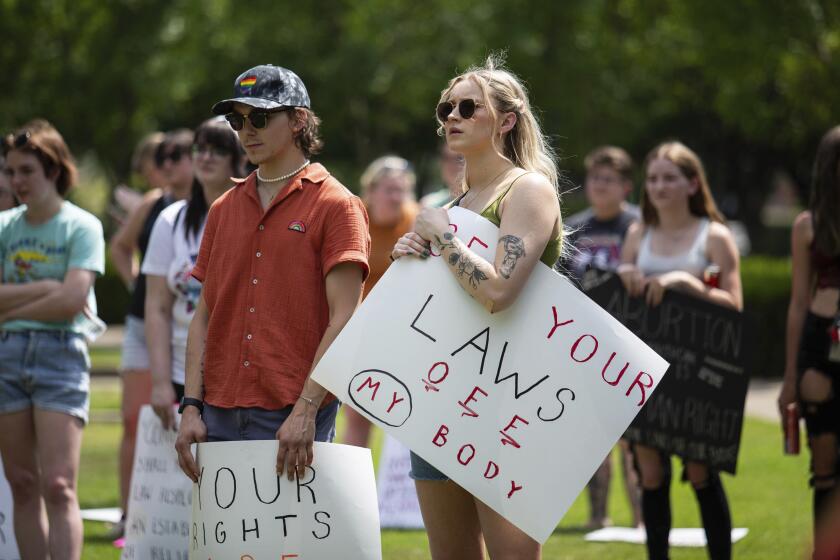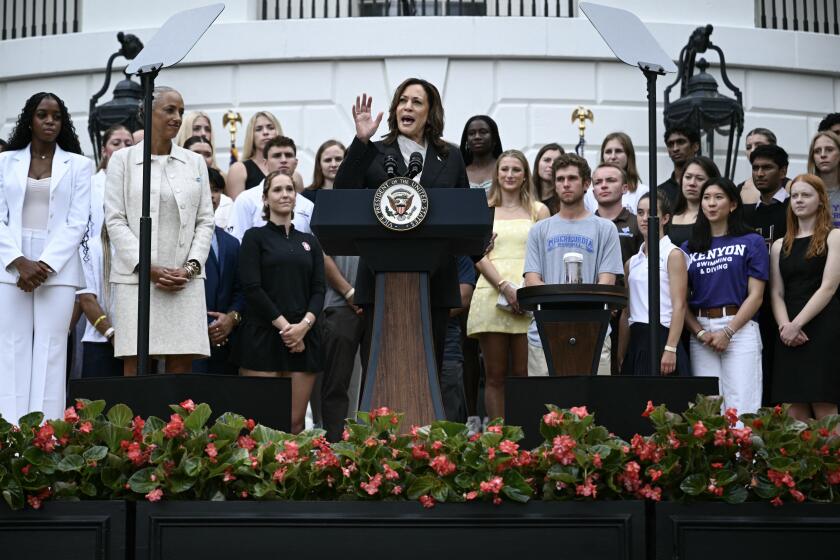Editorial: Tough budget choices await Brown and Legislature
Jerry Brown takes his fourth and final oath of office as California governor on Monday, and members of the Assembly and state Senate, having been sworn in last month, are gearing up for Brown’s 13th state budget proposal. That spending plan will come at a time of fiscal and economic recovery brought on in part by the last four years of relatively disciplined budgeting — and in large part by voters’ decision in 2012 to adopt Proposition 30, Brown’s temporary sales and income tax increases.
The quarter-cent sales tax hike lasts until Dec. 31, 2016. Personal income tax increases for the state’s highest earners go on for two years after that. So the governor and lawmakers may be tempted to put off the politically difficult discussion of how to replace or live without that revenue when it evaporates.
Let’s hope they resist that temptation. The budget choices they make for the coming fiscal year are linked to the economy of the near future; programs begun or continued today will require the money to keep flowing in two years. Some Democrats have talked about extending the taxes, or even making them permanent, by way of a 2016 ballot measure. They may or may not have the best policy in mind, but they are right to get the subject on the table now.
Brown has a well-deserved reputation as a budget miser, and it’s a trait that has often served California well. But he, and the state with him, has simultaneously expressed a hunger for big and costly construction projects, and that contradiction is likely to loom large in the coming year with continued attention on the California High-Speed Rail and the Bay Delta Conservation Plan — and specifically that part of the plan that contemplates construction of two large tunnels to divert Sacramento River water to the Central Valley and Southern California.
Each project would link Northern and Southern California and, in so doing, would more completely bind the San Joaquin Valley and its agribusiness economy to the larger population centers in the Bay Area and in Southern California.
The tunnels project, in fact, links three eras of California: the 1960s, when the current governor’s father, Pat Brown, presided over a spirit of growth and optimism expressed in part in the construction of the California State Water Project and the aqueduct that brings water from the Sacramento-San Joaquin River Delta to Central Valley farms and urban areas such as Los Angeles; the 1970s, when a young Gov. Jerry Brown quoted “small is beautiful” and questioned government’s role in big, costly projects (but also famously proposed a state satellite, as well as the rail system); and the present, when the aging generation of Californians who lived through the earlier eras, and the young Californians who didn’t, will have to decide whether to go all in on the two projects or put a stop to them.
The tunnels are the latest incarnation of a peripheral canal that was to be part of the original State Water Project. Rather than being a California link, that canal divided the state emotionally and politically. The vote that defeated the project in June 1982 came just before the end of Brown’s earlier “last” term as governor and the defeat for U.S. Senate that, it was widely thought at the time, ended his political career.
Today, 35 years later, Californians still face a quandary over water: How can we fairly divide this precious resource among competing interests and regions? Does a confident and sustainable future lie in growth and construction, or in thinking smaller?
Brown and the Legislature can build on the momentum they created last year with a law that, for the first time, will begin the regulation of groundwater, and with a water bond that will fund projects to capture, save and recycle water.
They must also continue reforming the criminal justice system and keep Californians safe while complying with court orders to decrease the prison population. They must decide how to fund a strong state university system and improve K-12 schools. They must keep the economic recovery going while providing relief and opportunity for people who need help.
Monday is Sacramento’s opening day. It has a long season ahead of it, and let’s hope for a successful one. And, while we’re at it, maybe a little more rain.
Follow the Opinion section on Twitter @latimesopinion
More to Read
A cure for the common opinion
Get thought-provoking perspectives with our weekly newsletter.
You may occasionally receive promotional content from the Los Angeles Times.






